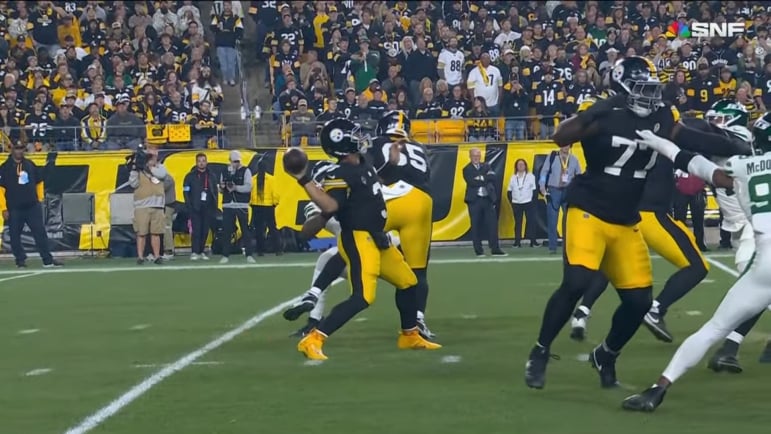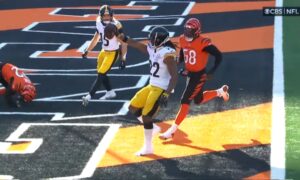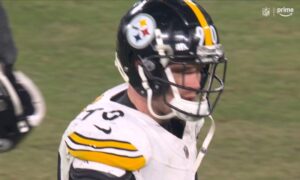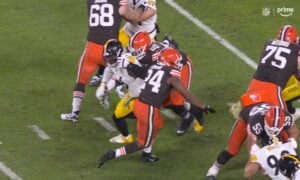Even though it is quite obvious to anybody who has watched Russell Wilson and Justin Fields that both are capable of pushing the football down the field in the vertical passing game, the way they get it done is quite different. Arm strength and accuracy are often the two things people talk about the most, but the loft and trajectory of the football can make a big difference.
Russell Wilson has always been known for his moon ball, which has much more of an arch to it than Fields’ deep ball. Think of it like the difference between a deep pop fly in baseball and a line drive. The fielder will have more time to adjust and react to the placement of the ball if there is more loft on it. In baseball, that can be a bad thing for a hitter. In football, that can be a great thing for a quarterback who wants to give their receivers ample time to adjust and make plays.
“I think the thing that stood out was George Pickens made plays one-on-one. That’s the real difference in the performance of the offense specifically to the quarterback,” Dan Orlovsky said on ESPN’s NFL Live. “But I do think it is important to point out that on those plays that Pickens made one-on-one, the difference in Russell’s throws and Justin’s throws are the air. Russ puts the ball up in the air and allows those guys to kind of track that football really well and try to go make a play on it. Justin’s more of a driver of the football.”
One is not necessarily better than the other, but when you have a receiver like Pickens, who is a cheat code in 50-50 scenarios, it is a great benefit for him to have additional time to adjust to the ball in the air. It can also be good for speedsters like Calvin Austin III or Scotty Miller, who can run under the ball with a little additional hang time.
I have explained it to you. Now let me show you what I mean.
Here is one of the deep connections from Wilson to Pickens against the New York Jets. Notice the launch angle and how the camera crew has to zoom out to even keep the ball in frame. Pickens had more time to figure out where to adjust and ultimately made a big play.
Here is a deep shot from Fields to Darnell Washington against the Dallas Cowboys. That ball was thrown on a rope with very little loft under it. It gave Washington less time to adjust and the pass fell incomplete.
There are examples of where Wilson’s method can be a bad thing, and where Fields’ can be a good thing, but the ability to mix it up and use the appropriate touch can set two passers apart in a big way. Fields isn’t as good at varying his launch angles and the ball often comes at full speed with very little air under it. This is what people mean when they say Wilson has better “touch” on his passes.
There is a reason Pat Freiermuth called Wilson’s deep ball a “whole different thing” after the Week 7 win.
In addition to the touch, Orlovsky says Wilson was more willing to throw to covered receivers in a clip from the same segment posted on X by NFL on ESPN.
Through one game, Wilson’s touch seems to be paying off. We will see if he can keep it going with another strong performance on Monday Night Football against the New York Giants.








